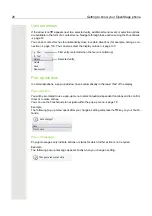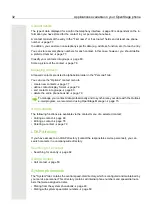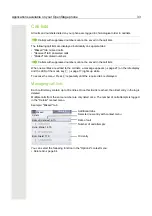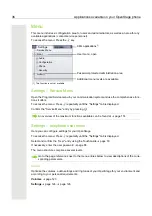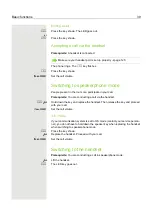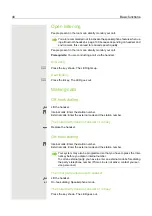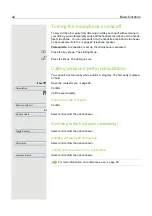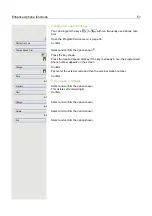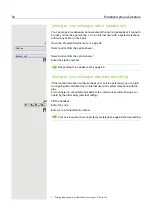
38
Basic functions
Basic functions
Answering a call
Your OpenStage phone rings with the tone signal set when an incoming call is
received. The call is also visually signaled on the call display.
• When you receive an internal call, your telephone rings once every four sec-
onds (single-tone sequence).
• When you receive an external call, your telephone rings twice in rapid succes-
sion every four seconds (dual-tone sequence).
• When you receive a call from the entrance telephone, your telephone rings
three times in rapid succession every four seconds (triple-tone sequence).
• If a call is waiting, you hear a short tone (beep) every six seconds.
If transmitted, calling party information (name, phone number) appears on the
graphic display.
Answering a call via the handset
The phone is ringing. The caller is displayed.
^
Lift the handset.
if nec.
X
Set the call volume.
Answering a call via the loudspeaker
(speakerphone mode)
Suggestions for using speakerphone mode
• Tell the other party that speakerphone mode is active.
• Adjust the call volume while speakerphone mode is active.
• The ideal distance between the user and the phone in speakerphone mode is
about 50 cm.
The phone is ringing. The caller is displayed.
n
Press the key shown. The LED lights up.
or
Confirm.
The speakerphone function is activated.
if nec.
X
Set the call volume.
Please read the introductory chapters "Getting to know your OpenStage
phone"
and "Applications available on your OpenStage phone"
carefully before performing any of the steps described here on
your phone.
Your service personnel can adjust the ring cadence for external and inter-
nal calls for you. In other words, different ring cadences can be set for dif-
ferent internal callers.
An incoming call will interrupt any ongoing telephone setting operations.
Answer





